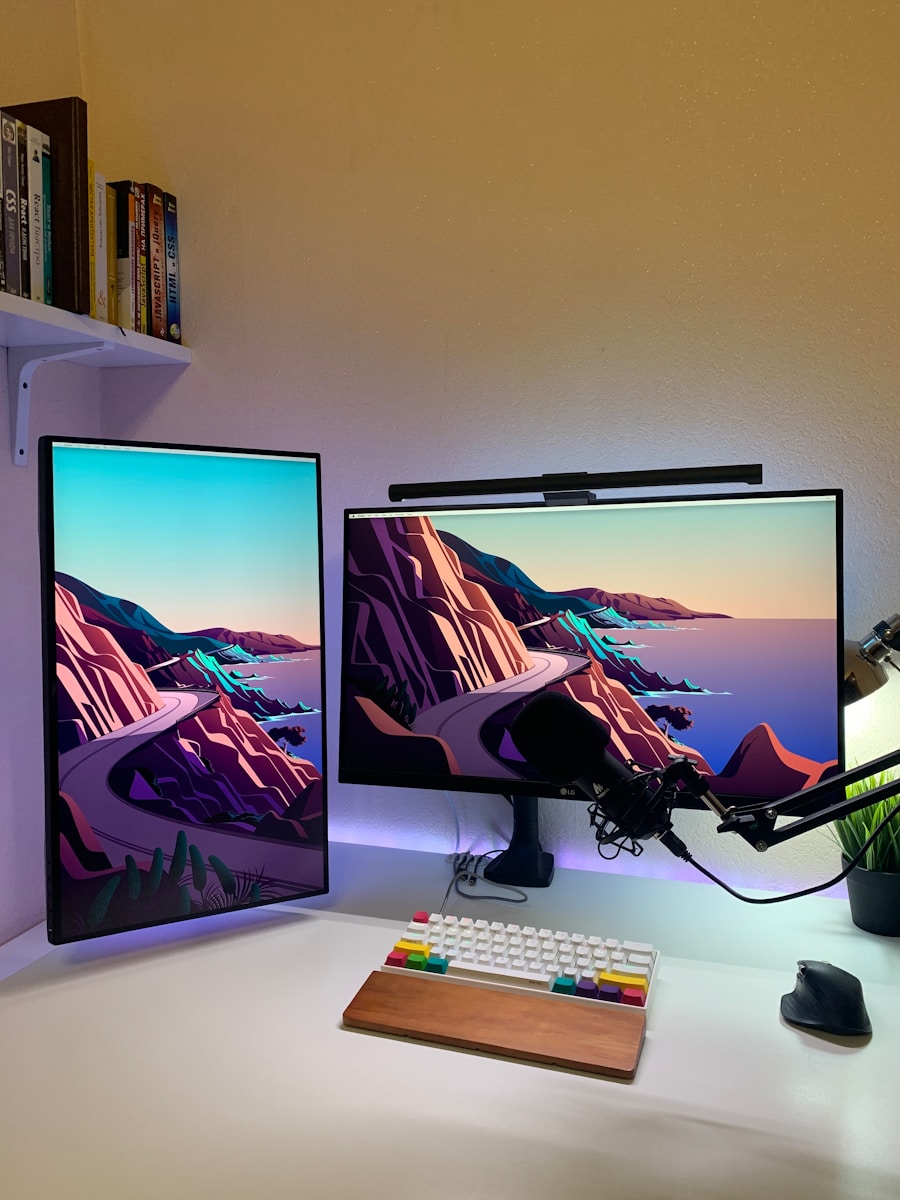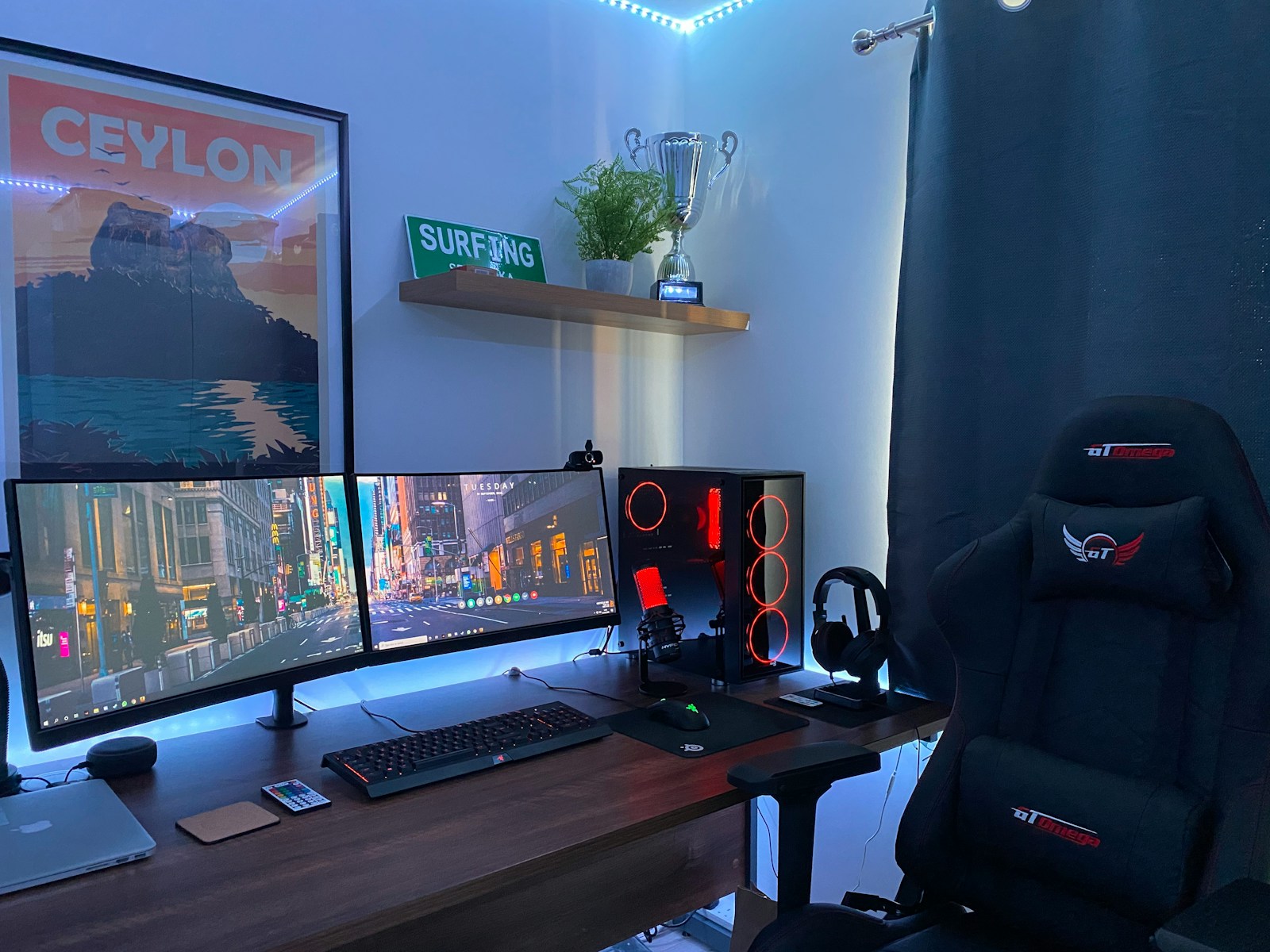Choosing between an ultrawide monitor and a dual monitor setup can transform your workspace productivity. A dual monitor setup wins for most users due to better multitasking flexibility and higher total pixel count compared to ultrawide displays.
Screen space needs vary based on work style and desk layout. Ultrawide monitors offer a clean, single-cable solution with a seamless display area. Dual monitors provide more screen area and allow independent height and angle adjustments for each display.

The decision impacts both functionality and aesthetics. A dual monitor setup lets users dedicate screens to specific tasks, while an ultrawide creates an immersive single-screen experience with no bezels in the middle.
Ultrawide vs Dual Monitor Setups: Which Should You Choose?
When setting up a productive and immersive workspace, the choice between an ultrawide monitor and a dual-monitor setup is one that many people face. Both options offer increased screen real estate compared to a single display, but they cater to different needs and preferences. Let’s dive into the differences, pros, and cons of ultrawide and dual-monitor setups to help you decide which is best for you.
🖥️ Ultrawide Monitor Setup

Ultrawide monitors have aspect ratios like 21:9 or 32:9, providing a wide, continuous display ideal for multitasking, immersive gaming, and creative work.
Pros:
- ✅ Seamless Screen Experience: No bezels interrupt your view, making it great for video editing timelines, spreadsheets, or immersive games.
- ✅ Better for Ultrawide Content: Some games and videos support ultrawide resolutions, offering more peripheral vision and a cinematic experience.
- ✅ Simplified Setup: One monitor, one cable, and one stand mean less clutter on your desk.
- ✅ Software-Friendly Multitasking: Many ultrawide monitors come with screen-splitting software to simulate multiple displays.
Cons:
- ❌ Costly Investment: Ultrawide monitors are generally more expensive than two standard monitors with similar total screen space.
- ❌ Compatibility Issues: Not all games and apps support ultrawide resolutions, leading to black bars or stretched images.
- ❌ Less Vertical Space: Most ultrawide monitors have a 1440p resolution, which may feel cramped compared to taller 4K or 16:10 monitors.
Best For:
- Video editors, music producers, and content creators
- Gamers seeking immersive visuals
- Professionals working with wide datasets like spreadsheets
🖥️🖥️ Dual Monitor Setup

A dual-monitor setup typically involves two separate displays side-by-side, often with identical or similar specifications.
Pros:
- ✅ Flexible Configuration: You can mix and match monitor sizes, resolutions, and orientations (like one in portrait mode).
- ✅ Wider Software Support: All applications work well with dual monitors, with no aspect ratio compatibility issues.
- ✅ Better Vertical Space: You can use one monitor for content and the other for tools or communication apps.
- ✅ Cost-Effective: Two 1080p or 1440p monitors can be more affordable than one large ultrawide.
Cons:
- ❌ Disruptive Bezels: The bezel gap between monitors can be distracting, especially when working with wide datasets or gaming.
- ❌ More Desk Clutter: Two stands, multiple cables, and more desk space are needed.
- ❌ Potential Software Quirks: Fullscreen applications may default to one monitor, and window management can be less intuitive compared to ultrawide split-screen software.
Best For:
- Programmers, streamers, and multitaskers who need varied screen configurations
- Office professionals juggling communication tools and productivity apps
- Budget-conscious users wanting more screen space without overspending
Key Factors to Consider
| Factor | Ultrawide Monitor | Dual Monitor Setup |
|---|---|---|
| Screen Space | Continuous, seamless screen | Two distinct displays |
| Price | Higher cost for ultrawide models | More affordable with standard sizes |
| Productivity | Great for side-by-side workflows | More flexible but divided workspace |
| Gaming | Immersive for supported games | Useful for multitasking or streamers |
| Compatibility | Some apps may not support ultrawide ratios | Works with all applications |
| Setup | Clean, single-monitor setup | More cables and stands to manage |
Which One Should You Choose?
- Choose an Ultrawide Monitor if you prioritize a seamless workspace, immersive gaming experience, and often work with wide timelines (e.g., video editing).
- Choose a Dual-Monitor Setup if you need flexibility, prefer more vertical space, or want an affordable solution with maximum compatibility.
Ultimately, both setups can enhance productivity and entertainment. Your decision should align with your work habits, gaming preferences, and budget. 💡
Key Takeaways
- Dual monitors provide more flexible screen arrangements and total pixels
- Ultrawide displays offer a cleaner setup with no center bezel
- Monitor choice affects productivity based on specific work needs
Comparative Analysis of Display Configurations
Display configurations affect productivity, gaming performance, and visual experience in distinct ways. Screen space and aspect ratios play crucial roles in determining the best setup for specific needs.
Ultrawide Monitors
Ultrawide monitors feature 21:9 or 32:9 aspect ratios, providing extended horizontal screen space in a single panel. The seamless viewing experience eliminates distracting bezels common in dual-monitor setups.
Most ultrawide monitors offer 3440×1440 or 5120×1440 resolution options. The curved display design reduces eye strain by maintaining consistent viewing distances across the screen.
Gaming benefits significantly from ultrawide displays. The wider field of view creates an immersive experience, especially in racing and simulation games.
Windows Snap and FancyZones tools work effectively with ultrawide monitors, enabling efficient window management. Video editors appreciate the uninterrupted timeline view these displays provide.
Dual Monitor Setups
Dual monitor configurations typically use two 16:9 displays, offering more total screen space than standard ultrawide monitors. This setup excels in multitasking scenarios where users need to view multiple full-size windows simultaneously.
The flexibility to adjust each monitor’s position and angle helps users create ergonomic workspaces. Independent monitor settings allow for task-specific optimization of brightness, contrast, and color settings.
Monitor bezels create a visible divide between screens, which some users find distracting. Modern thin-bezel designs minimize this issue.
Many professionals prefer dual monitors for specific workflows. The setup enables dedicated screens for different tasks, such as coding on one display while reviewing documentation on another.







